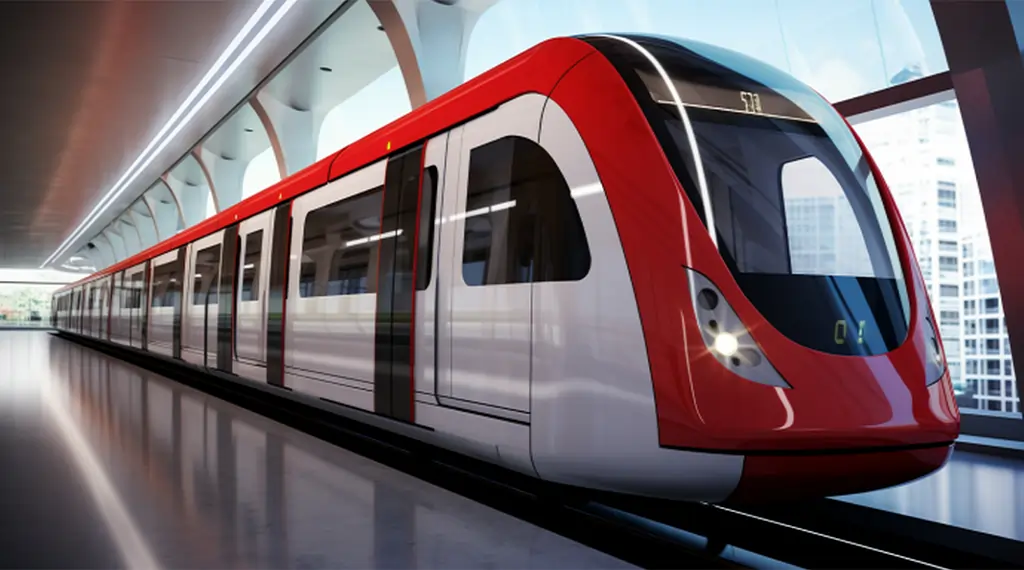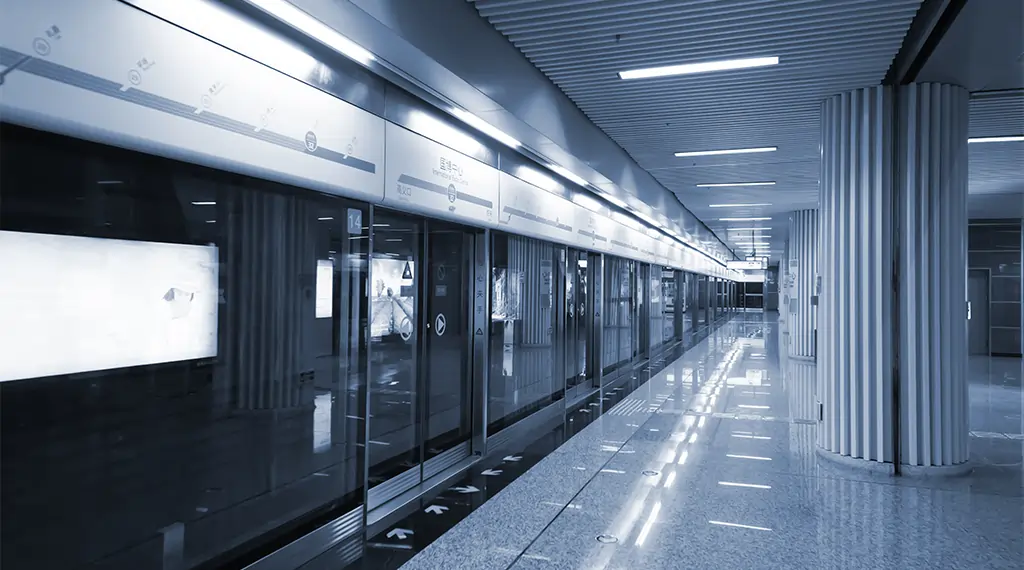
The Shastri Park Metro Station is a prominent and bustling stop on the Delhi Metro network, serving as a lifeline for thousands of daily commuters in North East Delhi. This station not only connects residential neighborhoods to the heart of the city but also stands as a testament to the rapid urbanization and infrastructural growth of Delhi. As one of the earliest stations on the Red Line, Shastri Park Metro Station has played a pivotal role in shaping the commuting patterns and lifestyle of the local population. Its strategic location, modern amenities, and seamless connectivity make it an essential part of Delhi’s public transport ecosystem.
For residents and visitors alike, Shastri Park Metro Station offers a blend of convenience, safety, and accessibility. The station’s design and facilities cater to a diverse crowd, including office-goers, students, shoppers, and tourists. Whether you are traveling for work, education, or leisure, this metro station ensures a smooth and efficient journey. In this comprehensive guide, we will explore every aspect of Shastri Park Metro Station, from its historical roots and connectivity to its facilities, accessibility features, and the vibrant life that surrounds it.
Historical Background
The story of Shastri Park Metro is deeply intertwined with the evolution of Delhi’s public transport system. Named after Lal Bahadur Shastri, India’s second Prime Minister and a revered figure in the country’s history, the area and the station symbolize progress and transformation. When the Delhi Metro Rail Corporation (DMRC) launched its first phase in the early 2000s, Shastri Park Metro was among the initial stations, marking the beginning of a new era in urban mobility.
The establishment of Shastri Park Metro not only improved connectivity but also acted as a catalyst for economic and social development in the region. The station’s presence led to the creation of the Delhi IT Park, which attracted technology companies and professionals, thereby boosting employment and commerce. Over the years, the station has witnessed significant upgrades, adapting to the growing needs of the city’s population. Today, Shastri Park Metro stands as a symbol of Delhi’s commitment to sustainable and inclusive urban growth, bridging the gap between tradition and modernity.
Location and Connectivity
The Delhi Metro Shastri Park Station is strategically located in the Metro Vihar area of Shastri Park, Shahdara, Delhi 110053. Its geographical coordinates are 28°46′04″N 77°11′06″E, placing it at a vital intersection that connects several densely populated neighborhoods. The station’s location is a boon for residents of North East Delhi, offering them direct access to the city’s commercial, educational, and recreational hubs.
Connectivity is the hallmark of Delhi Metro Shastri Park Station. As part of the Red Line, the station links Rithala in the west to Shaheed Sthal (New Bus Stand) in Ghaziabad, covering key areas such as Kashmere Gate, Chandni Chowk, and Seelampur. The station’s proximity to major roads and bus routes further enhances its accessibility, making it a preferred choice for daily commuters. Whether you are heading to work, college, or a shopping spree, Delhi Metro Shastri Park Station ensures that you reach your destination quickly and comfortably.
Metro Gates and Facilities
One of the standout features of Shastri Park Metro Station Delhi is its well-planned entry and exit gates, designed to manage the flow of passengers efficiently. The station has two main gates:
- Gate 1: This gate opens towards the bustling Gandhi Nagar market, making it convenient for shoppers and traders to access the station.
- Gate 2: Located near the Delhi IT Park, this gate caters primarily to professionals and visitors to the business district.
The facilities at Shastri Park Metro Station Delhi are designed to enhance the commuter experience. Passengers can avail themselves of lifts and escalators for easy movement between levels, especially beneficial for senior citizens and those with mobility challenges. Food kiosks near Gate 1 offer quick snacks and refreshments, while Sulabh toilets ensure clean and accessible restroom facilities. The presence of a PNB ATM at Gate 1 caters to banking needs, and smart lockers provide secure storage for personal belongings. These amenities reflect the station’s commitment to comfort, safety, and convenience for all.
Public Transport Availability
The Shastri Park Red Line Metro Station is a hub for various modes of public transport, ensuring seamless connectivity for passengers. The station is served by several Delhi Transport Corporation (DTC) bus routes, including 125EXT, 213, 214, 217, and 218, which connect it to different parts of the city. These buses have stops within walking distance of the station, making it easy for commuters to switch between metro and bus services.
In addition to buses, the vicinity of Shastri Park Red Line Metro Station is well-served by local trains, such as EMU 64051 and EMU 64901, further expanding the station’s reach. For last-mile connectivity, passengers can choose from a range of options, including auto-rickshaws, cycle-rickshaws, and taxis. The availability of multiple transport modes ensures that travelers can reach their destinations efficiently, regardless of their starting point or final stop. This robust public transport ecosystem makes Shastri Park Red Line Metro Station a true intermodal hub in Delhi’s urban landscape.
Accessibility Features
Accessibility is a core principle in the design of Shastri Park Metro Station route. The station is fully equipped to cater to the needs of passengers with disabilities, senior citizens, and those with temporary mobility challenges. Step-free access is provided through ramps and wide pathways, allowing independent movement from the entrance to the platforms. Multiple lifts and escalators connect the ground level, concourse, and platforms, ensuring that all areas of the station are easily accessible.
The Shastri Park Metro Station route also features tactile edges on platforms to assist visually impaired passengers in navigating safely. Accessible toilets are available, designed to accommodate wheelchairs and other mobility aids. Information screens and audio announcements keep passengers informed about train arrivals, departures, and station facilities. These features demonstrate the station’s commitment to inclusivity, ensuring that everyone can travel with dignity and ease.
Navigating Metro Station
Navigating the Shastri Park Metro Station timing is a straightforward and hassle-free experience, thanks to its intuitive layout and clear signage. The station is organized into three main levels:
- Ground Level (G): This is where passengers enter and exit the station, purchase tickets, and access the surrounding area.
- Concourse Level (L1): Here, commuters can find fare control, station agent desks, metro card vending machines, and crossovers for switching platforms.
- Platform Level (L2): The platforms are designed for easy boarding and alighting, with doors opening on the left.
The Shastri Park Metro Station timing is prominently displayed throughout the station, along with directional signs in both English and Hindi. Staff members are available at key points to assist passengers with ticketing, directions, and general inquiries. The station’s design minimizes confusion and ensures that even first-time visitors can navigate with confidence. Whether you are catching an early morning train or traveling late at night, the station’s layout and services make your journey smooth and efficient.
Nearby Markets and Attractions
The area surrounding Shastri Park Metro Station facilities is a vibrant mix of commercial and cultural attractions. One of the main draws is the Gandhi Nagar market, one of Delhi’s largest textile and garment markets, located just a short walk from Gate 1. This bustling marketplace offers a wide range of products, from clothing and accessories to household goods, making it a favorite destination for shoppers.
In addition to shopping, the vicinity of Shastri Park Metro Station facilities boasts several notable attractions. The Delhi IT Park, adjacent to the station, is a hub for technology companies and professionals. For those interested in history and culture, iconic sites such as Chandni Chowk and Lal Quila are easily accessible, either by foot or a short metro ride. The presence of Jag Pravesh Chandra Hospital ensures that healthcare services are within reach. These attractions make the station an ideal starting point for exploring the diverse offerings of North East Delhi.
Nearby Residential and Commercial Properties
The development of Shastri Park Metro Station has had a transformative impact on the surrounding real estate landscape. The area is now home to a mix of modern residential enclaves and commercial properties, catering to a diverse population. Housing complexes and apartment buildings provide comfortable living options for families, students, and working professionals. The station’s proximity to educational institutions, such as Dr. Akhilesh Das Gupta Institute of Technology and Management, makes it particularly popular among students.
On the commercial front, the Delhi IT Park stands out as a major business hub, attracting technology companies and startups. The presence of Shastri Park Metro Station has made the area a sought-after destination for both residential and commercial investments. The station’s connectivity, amenities, and vibrant surroundings have contributed to the growth of a thriving urban community, where people can live, work, and play in close proximity.
User Review and Passenger Experience
Passenger feedback for Shastri Park Metro is overwhelmingly positive, reflecting the station’s commitment to quality and customer satisfaction. Commuters appreciate the station’s cleanliness, efficient management, and comprehensive facilities. The availability of lifts, escalators, and accessible toilets is particularly valued by senior citizens and passengers with disabilities. The station’s strategic location and frequent train services ensure minimal waiting times and smooth travel, even during peak hours.
The presence of food kiosks, ATMs, and smart lockers adds to the convenience, making daily commutes hassle-free. Security measures, including CCTV surveillance and trained personnel, contribute to a safe and welcoming environment. Passengers also commend the helpfulness of the staff, who are always ready to assist with ticketing, directions, and other queries. Overall, Shastri Park Metro has earned a reputation as one of the most user-friendly stations in the Delhi Metro network.
Security Features
Safety is a top priority at Shastri Park Metro Station Delhi. The station is equipped with state-of-the-art security features to ensure the well-being of passengers and staff. CCTV cameras are installed throughout the premises, providing continuous surveillance and helping to deter and detect any suspicious activity. Security personnel are stationed at key points, ready to assist passengers and respond to emergencies.
All entry points at Shastri Park Metro Station Delhi are equipped with baggage scanners and metal detectors, ensuring that only authorized items are allowed inside. Emergency help points, such as red buttons and intercoms, are available on platforms for immediate assistance. The station also conducts regular security drills to prepare staff and passengers for any eventuality. These robust security measures create a safe and secure environment, allowing commuters to travel with peace of mind.
Nearby Metro Stations
Shastri Park Metro Station is strategically located on the Red Line, giving commuters easy access to several important metro stations in Delhi and Ghaziabad. The Red Line is one of the city’s busiest and most vital corridors, connecting the northwest and east of Delhi, all the way to Ghaziabad. If you travel from Shastri Park, you can quickly reach nearby stations like Seelampur and Kashmere Gate. Kashmere Gate is a major interchange, linking the Red Line with the Yellow and Violet Lines and the city’s main bus terminal, making it a hub for travelers heading to different parts of Delhi and beyond.
The Red Line’s extensive reach includes a mix of residential, commercial, and industrial areas. This makes it highly convenient for daily office-goers, students, and shoppers. The line’s interchanges at Inderlok, Netaji Subhash Place, Welcome, and Kashmere Gate offer smooth transfers to other metro lines, ensuring a hassle-free journey across the city. Below is a comprehensive table of all the stations on the Delhi Metro Red Line, including their opening years and any interchange or connection options:
| No. | Station Name | Opening Year | Interchange/Connection |
| 1 | Shaheed Sthal (New Bus Adda) | 2019 | Ghaziabad |
| 2 | Hindon River | 2019 | – |
| 3 | Arthala | 2019 | – |
| 4 | Mohan Nagar | 2019 | Blue Line (future) |
| 5 | Shyam Park | 2019 | – |
| 6 | Major Mohit Sharma Rajendra Nagar | 2019 | – |
| 7 | Raj Bagh | 2019 | – |
| 8 | Shaheed Nagar | 2019 | – |
| 9 | Dilshad Garden | 2008 | – |
| 10 | Jhilmil | 2008 | – |
| 11 | Mansarovar Park | 2008 | – |
| 12 | Shahdara | 2002 | Shahdara Railway Station |
| 13 | Welcome | 2002 | Pink Line |
| 14 | Seelampur | 2002 | – |
| 15 | Shastri Park | 2002 | – |
| 16 | Kashmere Gate | 2002 | Yellow Line, Violet Line, ISBT |
| 17 | Tis Hazari | 2002 | – |
| 18 | Pul Bangash | 2003 | – |
| 19 | Pratap Nagar | 2003 | Subzi Mandi Railway Station |
| 20 | Shastri Nagar | 2003 | – |
| 21 | Inderlok | 2003 | Green Line |
| 22 | Kanhaiya Nagar | 2004 | – |
| 23 | Keshav Puram | 2004 | – |
| 24 | Netaji Subhash Place | 2004 | Pink Line |
| 25 | Kohat Enclave | 2004 | – |
| 26 | Pitampura | 2004 | – |
| 27 | Rohini East | 2004 | – |
| 28 | Rohini West | 2004 | – |
| 29 | Rithala | 2004 | – |
With this comprehensive network, Shastri Park Metro Station ensures that passengers can easily travel to major business centers, educational institutions, shopping areas, and residential neighborhoods across Delhi and Ghaziabad. The Red Line’s connectivity and interchange points make it a backbone of Delhi’s public transportation, simplifying daily commutes for millions.
Connectivity to Important Locations
The Shastri Park Metro Station timing plays a crucial role in connecting passengers to important destinations across Delhi. The station’s operational hours are designed to accommodate the needs of early morning commuters as well as those traveling late at night. The first train departs at 5:42 AM, and the last train leaves at 11:42 PM, ensuring that passengers have ample options throughout the day.
Key locations accessible from Shastri Park Metro Station timing include:
- New Delhi Railway Station: Directly accessible via the Red and Yellow Lines, making intercity travel convenient.
- Rajiv Chowk: The commercial and entertainment hub of Delhi, reachable in a few stops for shopping, dining, and leisure activities.
- Central Secretariat and Government Offices: Quick access for professionals and government employees.
- Educational Institutions: Easy commute for students attending nearby colleges and universities.
- Hospitals and Healthcare Centers: Proximity to Jag Pravesh Chandra Hospital and other medical facilities ensures timely access to healthcare.
Whether you are traveling for work, education, healthcare, or leisure, Shastri Park Metro Station timing ensures that you can reach your destination efficiently and on time.
Shastri Park Metro Station: A Community Perspective
The impact of Shastri Park Metro Station facilities extends beyond transportation; it has become an integral part of the local community. The station serves as a meeting point for friends and families, a hub for local businesses, and a symbol of progress for the area. The presence of the metro has led to the growth of new markets, eateries, and service providers, creating employment opportunities and boosting the local economy.
Community events, cultural festivals, and public awareness campaigns are often organized in and around Shastri Park Metro Station facilities, fostering a sense of belonging and civic pride. The station’s role in promoting sustainable transportation and reducing traffic congestion has also contributed to a cleaner and greener environment. For many residents, the metro station is not just a means of travel but a source of inspiration and hope for a better future.
Shastri Park Metro Station and Urban Development
The establishment of Shastri Park Metro Station has been a driving force behind the urban development of North East Delhi. The station’s connectivity has attracted real estate developers, leading to the construction of modern housing complexes, shopping centers, and office spaces. The area has seen a surge in property values, making it an attractive destination for investors and homebuyers.
Infrastructure improvements, such as better roads, street lighting, and public amenities, have followed the growth spurred by Shastri Park Metro Station. The station’s influence extends to social development as well, with improved access to education, healthcare, and recreational facilities. The integration of the metro with other modes of transport has made the area more accessible and livable, contributing to the overall quality of life for residents.
Shastri Park Metro Station: Environmental Impact
The introduction of Shastri Park Metro has had a positive impact on the environment by promoting the use of public transport and reducing reliance on private vehicles. The metro’s energy-efficient operations and eco-friendly design contribute to lower carbon emissions and improved air quality in the region. The station’s role in reducing traffic congestion has also led to quieter streets and safer roads.
Green initiatives, such as rainwater harvesting, solar panels, and waste management systems, are implemented at Shastri Park Metro to minimize its environmental footprint. The station’s landscaping and green spaces provide a refreshing contrast to the urban landscape, offering passengers a pleasant and relaxing environment. By encouraging sustainable transportation, Shastri Park Metro is helping to build a cleaner and healthier city for future generations.
Shastri Park Metro Station: Technology and Innovation
The Delhi Metro Shastri Park Station is at the forefront of technology and innovation in public transportation. The station is equipped with advanced ticketing systems, including smart cards and contactless payments, making fare collection quick and efficient. Real-time information screens and mobile apps keep passengers informed about train schedules, delays, and other important updates.
Security systems at Delhi Metro Shastri Park Station are state-of-the-art, with high-definition CCTV cameras, automated baggage scanners, and emergency response protocols. The station’s infrastructure is designed to accommodate future upgrades, ensuring that it remains at the cutting edge of urban mobility. The use of technology not only enhances the passenger experience but also improves operational efficiency and safety.
Shastri Park Metro Station: Future Prospects
Looking ahead, Shastri Park Metro Station Delhi is poised for further growth and development. Plans for expanding the metro network and integrating new lines will enhance the station’s connectivity and importance. The ongoing modernization of facilities and services will ensure that the station continues to meet the evolving needs of passengers.
The future of Shastri Park Metro Station Delhi is bright, with opportunities for smart city initiatives, digital innovation, and sustainable urban planning. As Delhi continues to grow and evolve, the station will remain a key player in shaping the city’s transportation landscape. The commitment to excellence, inclusivity, and sustainability will drive the station’s success in the years to come.
Conclusion
Shastri Park Metro Station is much more than a transit point on the Red Line; it is a cornerstone of North East Delhi’s urban fabric. From its historical roots and strategic location to its modern facilities and robust connectivity, the station plays a vital role in the daily lives of thousands of commuters. The comprehensive amenities, inclusive accessibility features, and strong security framework ensure a safe and comfortable journey for all.
The station’s influence extends beyond transportation, shaping the local community, driving urban development, and promoting environmental sustainability. As Delhi continues to expand and modernize, Shastri Park Metro Station will remain an indispensable part of the city’s transportation ecosystem. Whether you are a daily commuter, a visitor, or a resident, this station is your gateway to the vibrant and dynamic life of Delhi.
Frequently Asked Questions (FAQ)
Q1: What is the exact location of Shastri Park Metro Station?
Shastri Park Metro Station is located in Metro Vihar, Shastri Park, Shahdara, Delhi 110053, with coordinates 28°46′04″N 77°11′06″E.
Which metro line serves Shastri Park Metro Station?
The station is on the Red Line of the Delhi Metro, connecting Rithala to Shaheed Sthal (New Bus Stand).
Q3: What are the entry and exit gates at the station?
There are two gates: Gate 1 (towards Gandhi Nagar market) and Gate 2 (towards IT Park).
Q4: What facilities are available at Shastri Park Metro Station?
Facilities include lifts, escalators, food kiosks, Sulabh toilets, PNB ATM, and smart lockers.
Q5: Is Shastri Park Metro Station accessible for differently-abled passengers?
Yes, the station offers step-free access, lifts, tactile edges, accessible toilets, and clear information screens.
Q6: What are the station timings?
The first train departs at 5:42 AM, and the last train leaves at 11:42 PM.
Q7: Which public transport options are available near Shastri Park Metro Station?
Numerous bus routes, local trains, rickshaws, and taxis are available for onward travel.
Q8: What are the nearby markets and attractions?
Gandhi Nagar market, Delhi IT Park, Chandni Chowk, Lal Quila, and Jag Pravesh Chandra Hospital.
Q9: What security features are implemented at the station?
CCTV surveillance, security personnel, baggage scanners, metal detectors, and emergency help points.
Q10: Which metro stations are close to Shastri Park Metro Station?
Kashmere Gate, Seelampur, Chandni Chowk, Lal Quila, East Azad Nagar, and Welcome.
Q11: How has Shastri Park Metro Station impacted the local community?
The station has boosted local businesses, improved accessibility, and contributed to urban development and environmental sustainability.
Q12: What are the future prospects for Shastri Park Metro Station?
Plans for network expansion, smart city initiatives, and continued modernization will enhance the station’s role in Delhi’s transportation landscape.


